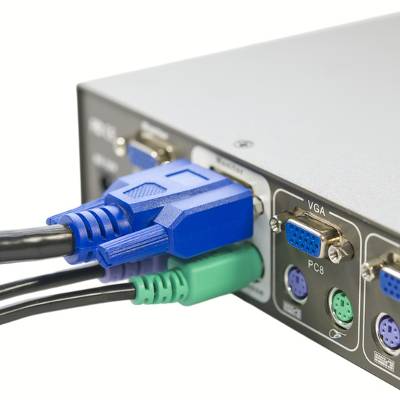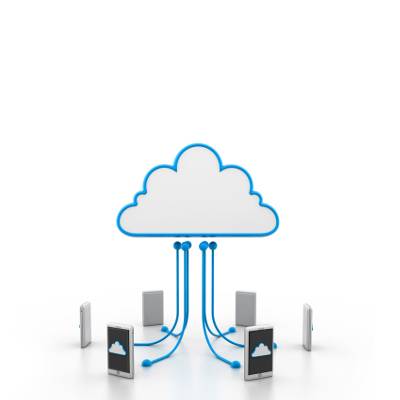 Modern businesses are built upon their data. Therefore, you need someone you trust to oversee it. Having the wrong person handle your IT systems could turn into a number of time-consuming, costly, and irritating problems for you. Here’s a list of the six most common IT problems that can be prevented by going with a trusted IT service provider.
Modern businesses are built upon their data. Therefore, you need someone you trust to oversee it. Having the wrong person handle your IT systems could turn into a number of time-consuming, costly, and irritating problems for you. Here’s a list of the six most common IT problems that can be prevented by going with a trusted IT service provider.
SMART Blog
 If you’re the owner of a successful and fast-growing business, you know what it’s like to have your time spread thin. With all of your responsibilities pulling you every which way, thinking about your company’s IT network tends to get pushed to the bottom of your list. We feel like you shouldn’t have to divert energy from money making ventures to worry about your IT.
If you’re the owner of a successful and fast-growing business, you know what it’s like to have your time spread thin. With all of your responsibilities pulling you every which way, thinking about your company’s IT network tends to get pushed to the bottom of your list. We feel like you shouldn’t have to divert energy from money making ventures to worry about your IT.
 In the world of business technology, industries are looking to save money as often as possible while maintaining or improving the productivity of their employees. One such method is with a BYOD strategy, or Bring Your Own Device. Some businesses allow their team to bring in and use their own devices for work purposes, but whether or not this actually saves them money is another story altogether.
In the world of business technology, industries are looking to save money as often as possible while maintaining or improving the productivity of their employees. One such method is with a BYOD strategy, or Bring Your Own Device. Some businesses allow their team to bring in and use their own devices for work purposes, but whether or not this actually saves them money is another story altogether.
 In the modern business landscape, WiFi is more important than ever before. In recent years, the capabilities of WiFi technology have improved dramatically, prompting more businesses to utilize wireless technology. An increased dependency on WiFi means that a working wireless connection is critical to operations. This requires knowing how to both properly setup and maintain your wireless network.
In the modern business landscape, WiFi is more important than ever before. In recent years, the capabilities of WiFi technology have improved dramatically, prompting more businesses to utilize wireless technology. An increased dependency on WiFi means that a working wireless connection is critical to operations. This requires knowing how to both properly setup and maintain your wireless network.
 This subject isn’t very interesting outside of hospital administrators… or for hospital administrators, but there’s no denying that healthcare is one of the most important industries in our society today; and one that is having a technology overhaul at present. The influx of cheaper and more powerful technology is surely going to be a driving force for healthcare in the 21st century. Under the Health Information Technology for Economic and Clinical Health Act (HITECH), the United States government has followed the lead of other Western nations in forcing entities to upgrade their healthcare practice’s information technology for the betterment of patients, insurers, and health care providers.
This subject isn’t very interesting outside of hospital administrators… or for hospital administrators, but there’s no denying that healthcare is one of the most important industries in our society today; and one that is having a technology overhaul at present. The influx of cheaper and more powerful technology is surely going to be a driving force for healthcare in the 21st century. Under the Health Information Technology for Economic and Clinical Health Act (HITECH), the United States government has followed the lead of other Western nations in forcing entities to upgrade their healthcare practice’s information technology for the betterment of patients, insurers, and health care providers.
 It can make a big difference for your business to partner with the right technology vendor. How can you know if you’re working with a vendor that’s looking out for your company’s best interests, or one that wants to rip you off? You can know for sure if you’re working with the right vendor if you have your trusted IT provider choose them for you.
It can make a big difference for your business to partner with the right technology vendor. How can you know if you’re working with a vendor that’s looking out for your company’s best interests, or one that wants to rip you off? You can know for sure if you’re working with the right vendor if you have your trusted IT provider choose them for you.
 Collaboration. It’s a buzzword that managers talk about all the time, yet few organizations will claim that they’ve mastered it. It’s often a company’s misuse of technology that attributes to their collaboration shortcomings--which is ironic because utilizing the right technology is the surest way to improve collaboration.
Collaboration. It’s a buzzword that managers talk about all the time, yet few organizations will claim that they’ve mastered it. It’s often a company’s misuse of technology that attributes to their collaboration shortcomings--which is ironic because utilizing the right technology is the surest way to improve collaboration.
 Technology is reliable. With correct coding and high-level instructions, technology will do exactly what it’s supposed to do. Yet, technology has a reputation for failing and being hard to work with. Might we be so bold as to suggest that the majority of technology problems are actually caused by humans? Here are three ways that human behavior breaks perfectly good technology.
Technology is reliable. With correct coding and high-level instructions, technology will do exactly what it’s supposed to do. Yet, technology has a reputation for failing and being hard to work with. Might we be so bold as to suggest that the majority of technology problems are actually caused by humans? Here are three ways that human behavior breaks perfectly good technology.
 Have you ever wondered how hackers become hackers in the first place? How are tools readily available to them? Business owners might be reluctant to find out that hacking has become easier than ever over the past decade. This is partly due to the increased sophistication of the black market known to some as the Darknet.
Have you ever wondered how hackers become hackers in the first place? How are tools readily available to them? Business owners might be reluctant to find out that hacking has become easier than ever over the past decade. This is partly due to the increased sophistication of the black market known to some as the Darknet.
 As we near the end of 2014, the topic of IT budgeting is on everyone’s minds. How much are you willing to spend, and on what? In order to provide optimal figures for the new year, you need to take some time to plan out what you think you need to spend, versus how much you’re willing to spend, on IT. Thankfully, you don’t have to do this alone.
As we near the end of 2014, the topic of IT budgeting is on everyone’s minds. How much are you willing to spend, and on what? In order to provide optimal figures for the new year, you need to take some time to plan out what you think you need to spend, versus how much you’re willing to spend, on IT. Thankfully, you don’t have to do this alone.
 IT support is heavily reliant upon communication between both parties involved. Without both sides being on the same page, IT support miscommunications are far more likely to happen. Sometimes you just can’t help but laugh at poor communication skills, as seen in the 2001 movie Zoolander. But thankfully, these situations don’t arise too often in the non-fictional universe… right?
IT support is heavily reliant upon communication between both parties involved. Without both sides being on the same page, IT support miscommunications are far more likely to happen. Sometimes you just can’t help but laugh at poor communication skills, as seen in the 2001 movie Zoolander. But thankfully, these situations don’t arise too often in the non-fictional universe… right?
 Your company's IT infrastructure is much like a puzzle. There are many different pieces that make it up, and each piece is needed for the entire network to work properly. One piece of equipment that often gets overlooked is the KVM switch. Here are three tips on finding the right KVM for your business.
Your company's IT infrastructure is much like a puzzle. There are many different pieces that make it up, and each piece is needed for the entire network to work properly. One piece of equipment that often gets overlooked is the KVM switch. Here are three tips on finding the right KVM for your business.
 The cloud is changing the future of the technology industry in ways previously unseen. The cloud has the ability to store and process data from anywhere with a mobile device, which greatly changes the way that businesses operate. Everyone has their own predictions about what will happen as the cloud becomes more popular, but Greg Walters of Walters & Shutwell Inc. has some particularly interesting ideas to chew on.
The cloud is changing the future of the technology industry in ways previously unseen. The cloud has the ability to store and process data from anywhere with a mobile device, which greatly changes the way that businesses operate. Everyone has their own predictions about what will happen as the cloud becomes more popular, but Greg Walters of Walters & Shutwell Inc. has some particularly interesting ideas to chew on.
 Conventional wisdom informs businesses to store every byte of their data possible, and with the affordability of cloud storage, more companies are storing more files. Surprisingly, in an aboutface to this maximum data-storage practice, businesses are now being advised to delete all unnecessary data in light of our lawsuit-happy culture.
Conventional wisdom informs businesses to store every byte of their data possible, and with the affordability of cloud storage, more companies are storing more files. Surprisingly, in an aboutface to this maximum data-storage practice, businesses are now being advised to delete all unnecessary data in light of our lawsuit-happy culture.
 As a business owner, you have an obligation to keep your data and network files safe from prying eyes and criminals. The latest threats, like the new Cryptowall 2.0 ransomware, can be a difficult hurdle to jump, especially when they are disguised and designed to ruin you. Thankfully, you don’t have to take on these threats alone.
As a business owner, you have an obligation to keep your data and network files safe from prying eyes and criminals. The latest threats, like the new Cryptowall 2.0 ransomware, can be a difficult hurdle to jump, especially when they are disguised and designed to ruin you. Thankfully, you don’t have to take on these threats alone.
 Doing business in today's world is dependant on mobility, and if you aren't ready to shift toward this new technology trend, you should seriously reconsider. A lot of the time, businesses will allow their employees to bring in their own mobile devices for use in the workplace. This trend is called a Bring Your Own Device (BYOD).
Doing business in today's world is dependant on mobility, and if you aren't ready to shift toward this new technology trend, you should seriously reconsider. A lot of the time, businesses will allow their employees to bring in their own mobile devices for use in the workplace. This trend is called a Bring Your Own Device (BYOD).
 Everything changes in due time. Computers grow less secure, malware grows more sophisticated, and hackers' methods change. According to Processor magazine, 80 to 90 percent of attacks are targeted at devices rather than networks and servers. Just like the weakest link in a fence, all it takes is one weak point for a hacker to take down your entire network.
Everything changes in due time. Computers grow less secure, malware grows more sophisticated, and hackers' methods change. According to Processor magazine, 80 to 90 percent of attacks are targeted at devices rather than networks and servers. Just like the weakest link in a fence, all it takes is one weak point for a hacker to take down your entire network.






